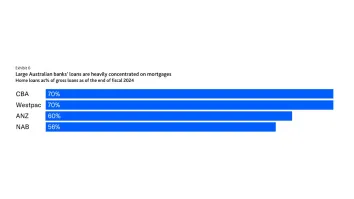CNH: Offshore loans set to grow and here's why
By Nathan Chow Hung Lai (周洪禮)Ten years into the internationalisation of the currency, Hong Kong’s yuan loan business has lagged behind other offshore business. Current outstanding yuan loans of Hong Kong banks, for example, total only RMB123 billion, about one-sixth of the RMB704 billion dim sum bond market (including certificates of deposits) (Chart 1).
According to the HKMA, RMB deposits reached RMB960 billion in April. Tellingly, the yuan’s loan-to-deposit ratio in Hong Kong was 13%, well below the 74% average for all currencies.
Nonetheless, a number of recent developments suggest that the Hong Kong’s yuan loans market is set to grow.
Shanghai FTZ free trade account
On 22 May, the People’s Bank of China (PBoC) announced details on the use of free trade account (FTA), which essentially opens up the country’s capital account within the Shanghai free trade zone (FTZ). Simply put, the new rules allow free fund transfers between FTAs and offshore accounts.
Meanwhile, yuan loans (undertaken for companies’ own use) with durations longer than six months obtained from Shanghai financial institutions may be transferred between FTAs and their ex-Shanghai affiliates (under the same name).
In addition, the State Administration of Foreign Exchange (SAFE) also streamlined the process for cross-border guarantees and deleted the quantitative limits for financial institutions issuing such guarantees.
The changes underscore Beijing’s commitment to accelerate the pace of capital account liberalisation. Previously, mainland firms had difficulties channeling yuan funds back to China due to tight capital account controls.
A more effective access to the offshore market under the new rules should significantly raise the demand for offshore yuan loans, which are cheaper than those in the mainland. Currently, the cost of a 1Y yuan loan is around 4% in Hong Kong, compared with 6% in China.
Measured steps
With the goal of liberalising the yuan in mind, a series of measures have been introduced since the beginning of this year. Some of these measures included operational details regarding yuan cross-border cash sweeping as well as pooling and netting for firms registered in the zone.
In particular, through the yuan-denominated intragroup cross-border sweep, companies can now link funds held within China with their offshore cash pool via a designated account. A total of 12 firms reportedly participated in the cross-border yuan pooling pilot program and mobilised funds of RMB4.6 bn.
The implementation of the FTA will further support the development of yuan cross-border business.
Hong Kong-Shanghai stock connect
Adding to the momentum will be the Hong Kong-Shanghai stock connect scheme scheduled for October. The pilot program establishes mutual stock market access between China and Hong Kong.
An aggregate quota of RMB300 billion and a daily quota of RMB13 billion will be set for the Northbound Trading Link (or investment to China), and RMB 250 billion and RMB 10.5 billion for the Southbound Trading Link (or investment to Hong Kong).
In relaxing capital flows between Hong Kong and Shanghai, offshore investors will have an additional avenue to RMB investments. Hitherto, only two offshore RMB-denominated equities have been issued; the Hui Xian REIT (April 2011) and Hopewell Highway Infrastructure (October 2012).
The pilot program allows Hong Kong investors to trade all the constituents of the SSE 180 Index and SSE 380 Index, and shares of all SSE-listed companies which have issued both A shares and H shares (Chart 2).
According to regulators, Hong Kong and overseas investors must use yuan to purchase stocks in Shanghai, with Hong Kong Securities Clearing Company Limited (HKSCC) paying yuan to ChinaClear. Unlike the qualified foreign institutional investor (QFII) scheme, the exchange of yuan will take place offshore.
Additionally, Hong Kong investors will be allowed to use margin trading offered by local brokers to invest in A shares (but similar arrangements will not apply to mainland investors who trade in Hong Kong shares). That could further raise demand for yuan loans in Hong Kong.
Yuan moving from one-way appreciation towards a two-way exchange rate
Offshore companies have long avoided yuan loans because of the currency’s steady appreciation over the past years. This year, China sought to introduce a more market-determined, "two-way" exchange rate.
This was aided by doubling the official trading band for USD/CNY to +/-2% around parity in March, which squeezed out speculators seeking to benefit from "one-way" appreciation in the yuan. According to our in-house barometer of offshore yuan activities, the DBS RMB Index for VVinning Enterprises (DRIVE), 6% of the surveyed clients in 1Q14 said that they will borrow in yuan, a marked increase from the 0.5% seen in 3Q13.
Potential yuan loan growth
There are two ways to gauge the potential of the offshore yuan loans market:
1) Assuming that the yuan’s loan-to-deposit ratio closes the gap with other currencies (74%), outstanding yuan loans could reach RMB710 billion.
2) The exposure of banks in Hong Kong to non-bank mainland China entities (NBMCE) amounted to HKD2.58 trillion in 2013, or 30% of the total lending by banks in Hong Kong. If 50% of their China exposure shift into yuan, yuan loans could reach HKD1.29 trillion (~RMB1,038 billion).
These scenarios suggest a six-to-eightfold increase in yuan loan volume is possible over time.
Conclusion
Yuan loan business of Hong Kong banks is expected to pick up amid policy changes and a currency regime less biased toward ‘one-way’ appreciation. With more balanced development on assets and liabilities sides, stronger demand for yuan loans should result.
A higher level of financial intermediation can improve the CNH Hibor curve as a benchmark to structure more yuan products. As more global investors use such products to participate in markets and hedge risks, this will be another important step towards internationalising the RMB.




















 Advertise
Advertise










